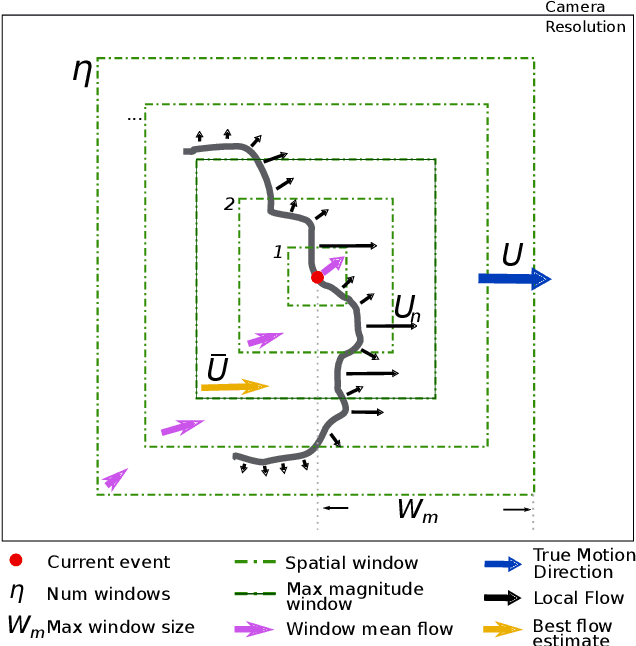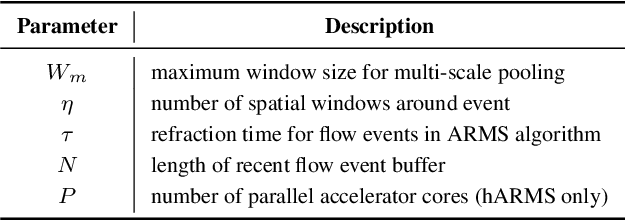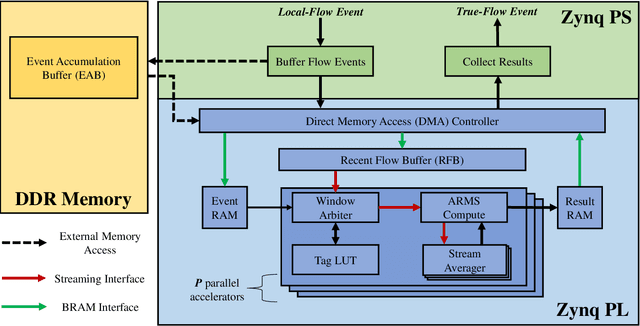hARMS: A Hardware Acceleration Architecture for Real-Time Event-Based Optical Flow
Paper and Code
Dec 13, 2021



Event-based vision sensors produce asynchronous event streams with high temporal resolution based on changes in the visual scene. The properties of these sensors allow for accurate and fast calculation of optical flow as events are generated. Existing solutions for calculating optical flow from event data either fail to capture the true direction of motion due to the aperture problem, do not use the high temporal resolution of the sensor, or are too computationally expensive to be run in real time on embedded platforms. In this research, we first present a faster version of our previous algorithm, ARMS (Aperture Robust Multi-Scale flow). The new optimized software version (fARMS) significantly improves throughput on a traditional CPU. Further, we present hARMS, a hardware realization of the fARMS algorithm allowing for real-time computation of true flow on low-power, embedded platforms. The proposed hARMS architecture targets hybrid system-on-chip devices and was designed to maximize configurability and throughput. The hardware architecture and fARMS algorithm were developed with asynchronous neuromorphic processing in mind, abandoning the common use of an event frame and instead operating using only a small history of relevant events, allowing latency to scale independently of the sensor resolution. This change in processing paradigm improved the estimation of flow directions by up to 73% compared to the existing method and yielded a demonstrated hARMS throughput of up to 1.21 Mevent/s on the benchmark configuration selected. This throughput enables real-time performance and makes it the fastest known realization of aperture-robust, event-based optical flow to date.
 Add to Chrome
Add to Chrome Add to Firefox
Add to Firefox Add to Edge
Add to Edge